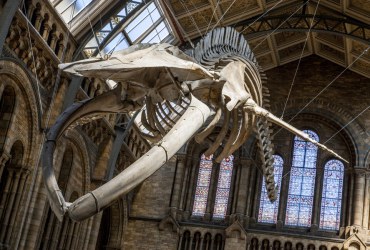On 13th of July the Natural History Museum in London unveiled the new star of its reimagined Hintze Hall, as the start of the biggest transformation in its 136-year history.
A stunning 25.2 metre real blue whale skeleton suspended from the ceiling now takes the centre stage in the space - giving visitors the opportunity to walk underneath the largest creature ever to have lived.
Blue whales were hunted to the brink of extinction in the twentieth century, but were also one of the first species that humans decided to save on a global scale. The Museum has named the female blue whale Hope, as a symbol of humanity's power to shape a sustainable future.
She is joined in Hintze Hall by hundreds of new specimens, chosen to celebrate the wonder and beauty of the natural world, from the origins of the universe, to the story of evolution and diversity in the world today. Ten new star specimens welcome visitors on the ground floor of the hall - including a 4.5-billion-year-old meteorite, a Mantellisaurus dinosaur skeleton, giraffes and a blue marlin.
The relaunch of Hintze Hall is the first major moment in a decade of transformation that will see the Museum redevelop its outside space and make the collections accessible to people all over the UK and globally through tours and digitisation.
Hintze Hall is now open at the Natural History Museum.

